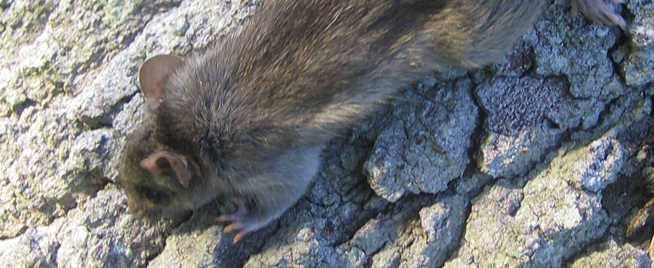Rats are very good climbers. That's great for them, because it means they can easily scamper away when necessary. If they are up against predators - other animals, for example, or even humans, they can run away, and even climb up and away if they need to. They're very good at it too.

Not just climbing proving a problem, small rats can slide their way through the smallest of gaps. Spaces beneath doors are an especially bad culprit, and if it's not a rat that pokes through, it'll be a mouse. Even if the gap isn't big enough for the rat to get through, the rat's sharp teeth and claws will make light work of making it much bigger, and they will even enter your home via the cat flap. They really are that blas� about things!
There are so many ways that a rat can get into your house, and climbing really is the tip of the iceberg. If you have sewer pipes or drains leading into or out of your home, the rats can get in, and most houses have those things. They can swim up sewer pipes, and there have even been incidences of rats entering the home through toilets. That's why we always recommend keeping the toilet seat down! If you do have open drains, just get them covered. It will make your life much easier in the fight against these furry little creatures. You can get metal grates to cover them, and screens will also work well. This is most definitely the case in areas such as the basement. How often do you check your drains, etc. down there?
Overhanging branches and even electrical cabling can also lead rats right onto your roof. Once they are up there, they are very difficult to get rid of. It doesn't take much for them to find a little entrance into your attic. Broken eaves and busted tiles are often the worst of culprits, but you can easily repair those spots of damage with mesh wire.
Rats are very good climbers, but they can also jump, crawl, nibble, and squeeze their way through whatever they need to get through too. You definitely shouldn't underestimate them. Once minute you'll see the animal, the next you won't. In order to get rid of these creatures from your home, you're going to need to be one step ahead of them, and the best way to do that is to do your research. The more you know about them, the more you can understand how and why they're getting into your home. At that point you can then take active steps to stop it from happening again.
Go back to the Rats in the Attic home page.

What surfaces are rats able to climb?
Rats can make their homes in almost any location they want to. Their main goal is to find a safe place to live and a short trip to a steady supply of food. They can damage a home and if they work their way into a food store, they can cause a lot of trouble. People work hard to keep rats out of their homes but sometimes they are not successful. They may use poison, live traps, or bait to get rid of the rats, however, they each come with their own risk.
So how do rats get in your home, to begin with? There are many outlets that allow a rat easy access to the inside of your home. Even though rats are larger in size compared to a mouse, they can still squeeze into a small hole if need be. Their main goal is food and shelter and they will do whatever they have to in order to fulfill their goals. Rats can get into holes they find on the outside of your home that you didn’t even know existed.
Plumbing
Plumbing that is running inside of your home is another way that a rat can get into your home. Plumbing lines go from the inside of your bathroom to the outside or underground to connect. The rat can use this as an access route to their destination.
Side of the House
Have you ever seen a rat climbing up the side of a house? They can, if the siding is rough, brick, stone, or even concrete. They can also climb up walls, fences, trees that hang over the house, and gateways. If a rat wants to enter your home, they will find a way to do so.
Drainpipes
If you keep food in your basement, the rat may smell it and decide that is where their new home will be. They will literally go up and down the drainpipe in order to connect to your basement. While you can’t remove the drainpipe, you can do things to prevent their travel from being easy. Fill in around the pipe with concrete when possible to block any openings.
Walls
Walls inside the home are normally smooth in texture and a rat cannot normally gain traction to climb on it. However, if there is brick or pebble somewhere on the wall, the rat can gain traction and climb up the walls to enter the attic.
Trees
When a tree branch leans over close to the house, a rat can climb up the tree and run on top of the branch to the roof where they can jump over. There is normally some breathing room underneath the roof and the rat can gain access there to get into the home.
It’s important to make a visual inspection of your home twice a year to see if anything around your home outside and inside has changed that could be an entry point for a rat who may be looking for a home.








